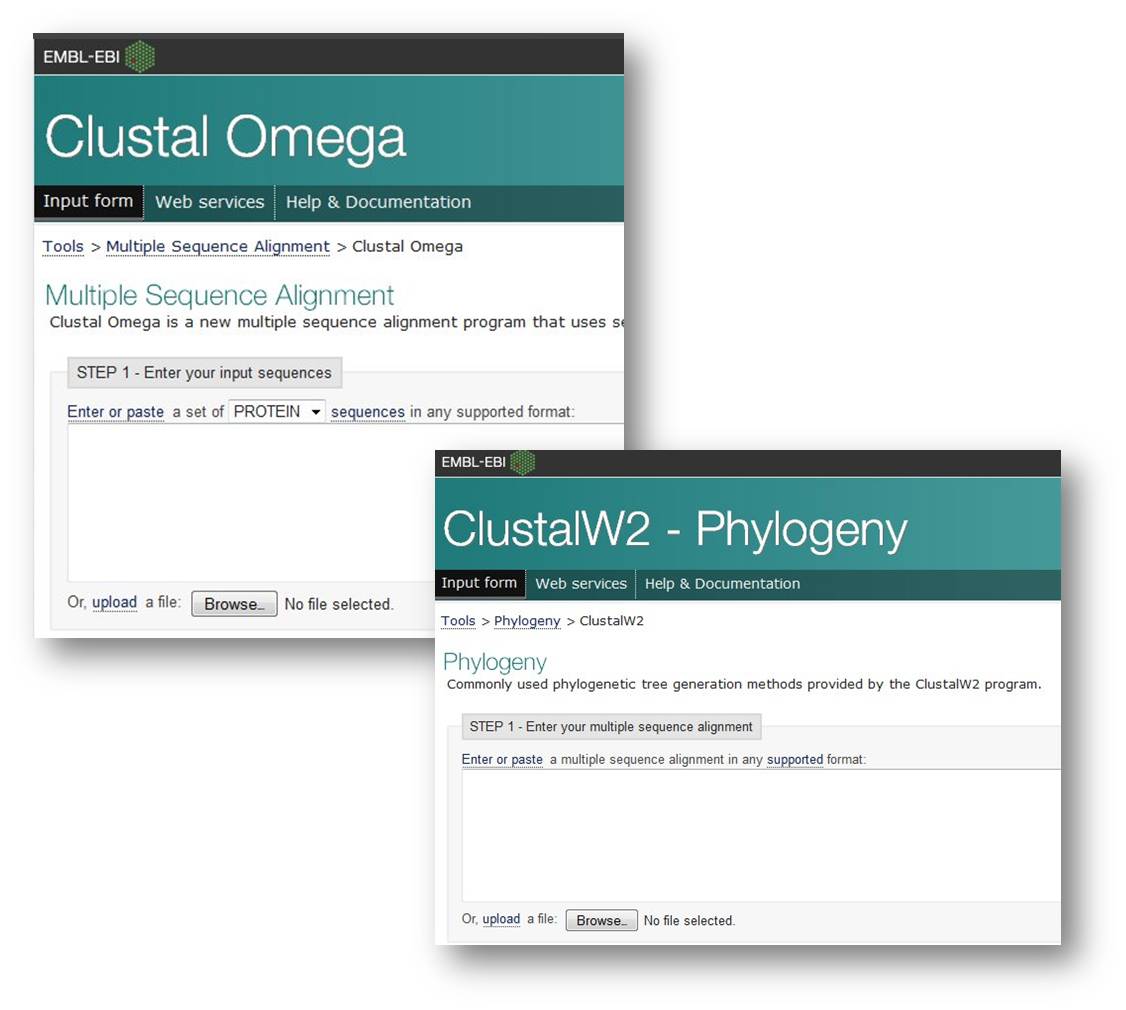Bioinformatics Tools and Molecular Systematics
In this section of the assignment, you will learn to use two powerful online tools for comparing DNA and protein sequences. There are many different software tools used by evolutionary biologists. In today's lab, you will use a set of web-based tools called Clustal Omega and Clustal W2, hosted by the European Bioinformatics Institute.
In the previous sections of this assignment, you have analysed a phylogenetic tree that is based on morphological features of the taxa being compared. You have also manually compared short example DNA sequences from each fish species to determine pairwise alignment scores, a mathematical representation of the similarity between two species based on a particular DNA or protein sequence. As you compared the DNA sequences, you probably noticed that this process is both tedious and error-prone - and your sequences were only twenty-three base pairs long! Biologists routinely compare much longer sequences, and often make comparisons between a very large number of taxa. Computers are ideal for performing tasks that humans find tedious and error-prone, and in this section of the assignment you'll see some of the information-management and calculation tools that are used in bioinformatics work.
To complete this section of the assignment, you will need this assignment document, the file called "FishSequences.txt", and the ClustalInstructions PDF. If you click on the .txt file and it automatically opens in a new tab of your browser instead of downloading, then just highlight the whole area of text and copy it (Ctrl-C on a PC or Command-C on a Mac).
The "FishSequences.txt" file contains complete actual DNA sequences for the four flatfish species for the gene COX1, which codes for one of the subunits of the mitochondrial enzyme cytochrome oxidase. A section of the COX1 gene sequence was selected as the "Barcode of Life" in the Barcode of Life project initiated at the University of Guelph, which allows small samples of tissue to be used to identify the species that the sample came from. For example, a CBC investigative report (CBC News, 2010) found that fish being sold in grocery stores was often being mislabelled; to reach this conclusion, the Marketplace reporters sent samples of the fish meat to be analysed. The samples' barcode regions (the section of the COX1 gene) were sequenced, then this information was compared to the database of known barcode sequences to identify the fish species that the meat actually came from.
This is the last part of the lab assignment. If you have any difficulty with the Clustal instructions (PDF), try viewing the video instructions demonstrating how to use the web resources. Click on the screencapture below to view the video.
References
CBC News. 2010 Apr 2. Mislabelling means rare fish sold: Marketplace. CBCnews [Internet]. [cited 2011 Dec 20]; Available from: http://www.cbc.ca/news/story/2010/04/01/consumer-fish-marketplace.html

